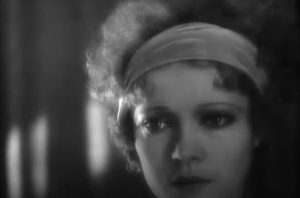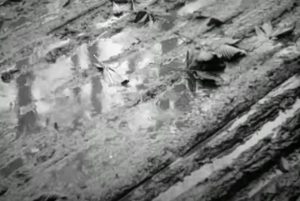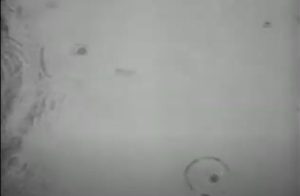Run Lola Run is not a film that feels the need to explain itself. It pieces together a story of discordant timelines and frantic trial and error, with the erratic desperation of its titular protagonist being exemplified through a feverish montage alternating between video and still image, color and B&W, animation and film. The movie is too fast to sit down and explain things to its audience — namely, why and how Lola has these abilities — and trusts the audience to piece things together on their own. It gives you just enough information to piece together what’s happening on your own without detracting from its breakneck pacing, and it is thanks to its unusual discontinuous style.
Run Lola Run keeps discontinuous imagery anchored to a strong narrative momentum by ensuring that the subject matter is always consistent, never explicitly explaining the connection between images but giving enough context clues to help them make accurate assumptions. For example, in the first running sequence, when Lola is in her room trying to figure out how she’s going to get the money to Manni, we hear her internal monologue list off a few names. Between each names, a still shot of a seemingly random person briefly flashes on screen. Given the story that’s being told, we can easily assume that these images reflect the person she is thinking of.
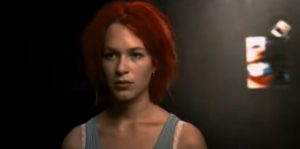

There are numerous other instances of this throughout the story, with some kind of visual cue or focal point allowing a seamless transition between continuities. When the TV cartoon transitions into main story, we are able to understand that this is just an alternatively styled presentation of Lola running by virtue of the extremely distinctive nature of her appearance (bright red hair, teal pants). This allows us to quickly understand the transition without confusion.
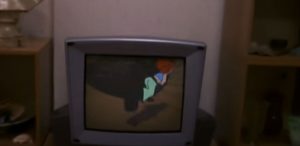
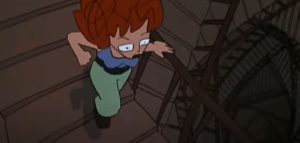
However, the most memorable way in which visual similarities are used to aid in the forward momentum of the story is how the phone acts as a focal point through which timelines shift. The first run ends with a close-up of Lola with her red hair, staring up at the red bag flying above her, spliced in with rapid cuts to the falling of the red phone. The color of the objects as well as the downward motion of the latter two creates a visual connection that allows for yet another seamless transition.
For this entire movie, she had been in a constantly restless state of movement. The one time she slows down and stops, because she has passed away, her stillness is juxtaposed against the falling motion of the bag and the phone. The moment the phone falls and stops moving, she has returned to the past and resumed movement once more.


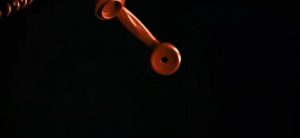
The movie does not stop to tell you that time travel is occurring. It first establishes that something unnatural is occurring with Lola speaking post-mortem, and then establishing a connection between the falling of the bag and the falling of the phone. Once those visuals have been adequately connected, the story fully pulls you back into the past and begins the next loop. It never stops to explain what has happened or why, but through visuals alone allows you to infer for yourself that she has been brought back to a sort of “save point” so she can try again.
Like its protagonist, Run Lola Run is a fast movie that is too busy to explain things to the audience, instead bringing you along for the ride and trusting that you will be smart enough to piece things together for yourself. Its experimental style perfectly complements this narrative decision, using abstract imagery and discontinuous editing to tell a story that uses the similarity and connectedness of its visual cues to help you follow along.
View Post